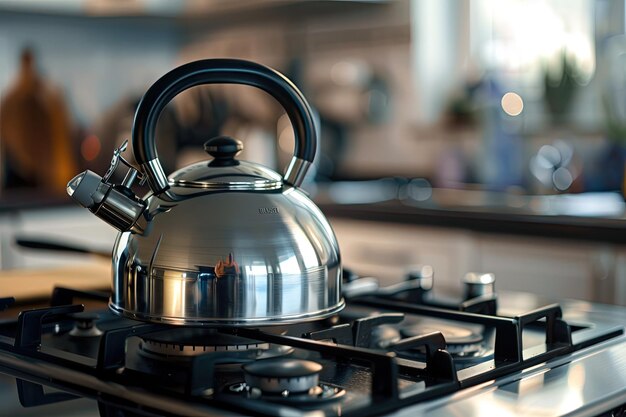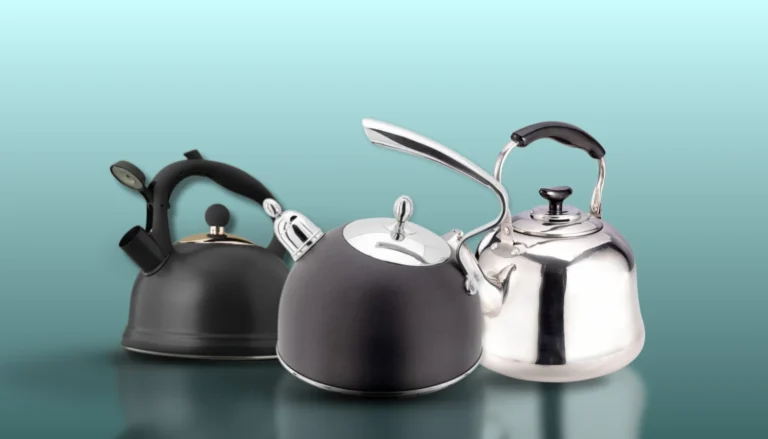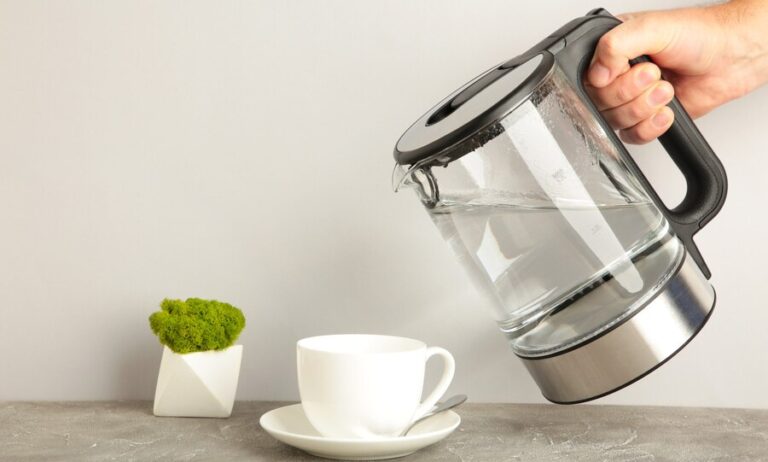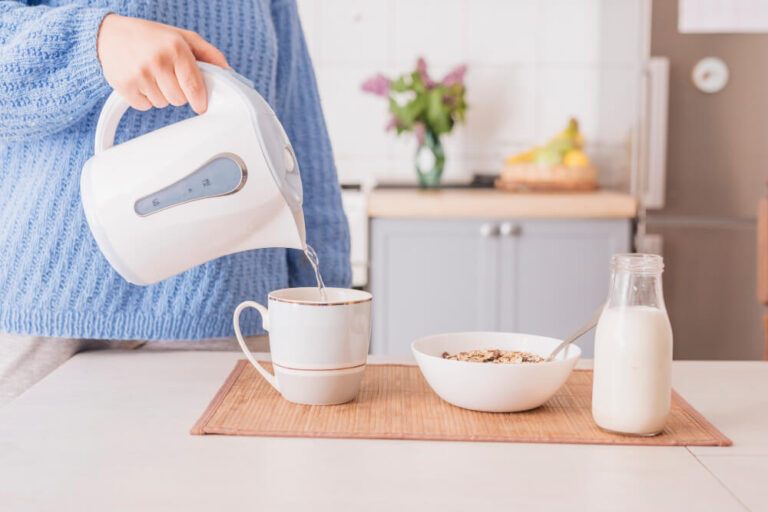How to Clean a Stovetop Kettle Quickly and Easily: Step-by-Step Cleaning Guide
Properly maintaining the cleanliness and condition of a stovetop kettle is essential to achieving functionality and longevity. Cleaning a kettle not only prolongs its lifespan but also ensures that its previous contents do not taint your tea or coffee.
Mineral deposits or stains formed on the inner surface gradually influence the heating effect of a kettle and the water boiled in it. This guide provides all the necessary information on how to clean and maintain your stovetop kettle so it works properly and will serve you for a longer time.
Are you looking for the best stovetop kettle for your home? Discover our pick of the best stovetop kettles and read our guide to learn everything you need to know to make perfectly brewed tea or coffee every time.
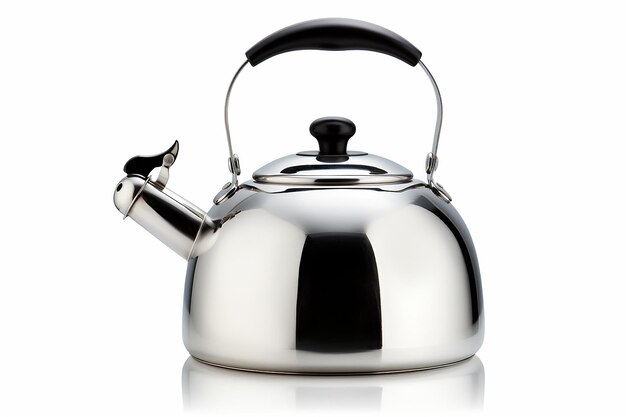
Table of contents:
How to Clean a Stovetop Kettle: Step-by-Step Easy Guide
Gather the Necessary Cleaning Supplies:
Before cleaning, make sure you have these recommended materials:
- Mild dish soap
- White vinegar
- For carbonated water, vinegar (against difficult strains)
- Lemon juice can also be used for natural descaling, although it will not be used here.
- Soft cloth or sponge
- Non-abrasive scrub brush
Daily Cleaning Routine:
For light cleaning, only one has to wipe the kettle with warm water after use of the kettle. And if the outside was, Eric originally said to clean them with a soft cloth with mild dish soap on the inside and outside part, then rinse thoroughly and let it dry with a soft towel so that it can’t create water spots or rust.
Deep Cleaning for Tough Stains:
To remove stubborn stains, follow these steps:
- Half fill the kettle with white vinegar and top up the remainder with water.
- Stir the ingredients to combine, then boil the mixture for about five minutes until it is ready to cool for about 20 more minutes.
- The interior should be scrubbed using a non-abrasive scrub brush.
- Wash with warm water and pat with a soft part of the towel.
For the burnt spots, you need to mix baking soda with water, apply the paste on the stained region, let it act for a few minutes, and then scrub.
Descaling a Stovetop Kettle: A Complete DIY Guide
What is Descaling and Why is it Necessary?
Descaling erases the fixed mineral deposits that form when boiling hard water. These include calcium and magnesium, which, if deposited in the kettle, are likely to alter the water’s taste or even reduce its efficiency by heating the water.
DESCALING is very important, ensuring the kettle performs well when in use.
DIY Descaling Methods:
Common descaling solutions include:
- White Vinegar and Water: Prepare a vinegar solution of 1 part vinegar and 1 part water.
- Lemon Juice: Lemon juice and water mixture with ¼ cup as the correct preparation.
- Baking Soda: Use baking soda and water mixture for a condition that does not require medical attention.
Step-by-Step Descaling Process:
- Pour the retardant solution of your choice into the kettle.
- Heat it and let it simmer for about 20 minutes as it softens the mineral deposits.
- In any case, pour out the solution and use a soft brush to clean any remaining deposits from the inside of the container.
- Always ensure that you remove any descaling solution from the kettle by rinsing it with water.
- Cook water for at least one or two times to lose the remaining taste.
Maintaining Stovetop Kettle for Longevity: Pro Tips for a Longer-Lasting Kettle
Preventive Maintenance Tips:
- Avoid Leaving Water in the Kettle: After every use, you should always empty the kettle to minimize the chance of accumulated minerals and rusting.
- Use Non-Abrasive Cleaners: Hard scraper or metal wood can easily scrape the kettle hence increasing the chances of rusting.
- Dry Thoroughly After Cleaning: It helps prevent water dots or rust from damaging the surfaces.
Proper Storage Tips:
Always keep your stovetop kettle in a dry location, and ensure that the lid hinge is open to minimize moisture condensing inside.
Routine Inspection for Wear and Tear:
You should always and often examine your kettle for any traces of rust when it gets dented or shows any other sign of damage. If any of them cause friction or are deforming, replace them as soon as you can so there will not be additional problems.
Why Cleaning and Maintaining Your Stovetop Kettle is Important:
A stovetop kettle can develop several problems if its cleaning and maintenance are neglected, including the following:
By performing routine maintenance, the kettle will have a longer lifespan and be able to heat water correctly.
Common Mistakes to Avoid When Cleaning Stovetop Kettles:
Using Harsh Chemicals: They might erode the kettle’s surface and can remain on it after the boiling process, posing a health risk.
Scrubbing Too Hard: Rust may be seen as an effect of vigorous scrubbing, resulting in scratches.
Ignoring Regular Cleaning: If regular cleaning is not conducted, engagement of hard deposits is acquired, hence powering cleaning.
FAQ’s About Stovetop Kettle Maintenance:
Conclusion: The Key to a Well-Maintained Stovetop Kettle
Always remember to clean and maintain your stovetop kettle appropriately to ensure that it is in the best possible working condition.
If you follow the cleaning suggestions and maintenance procedures, you will discover that your kettle will perform its function correctly and that your brew will be as flavorful as it should be.
It is important to develop these habits to get the benefits of a stovetop kettle that lasts for a long time and produces tasty hot beverages.
